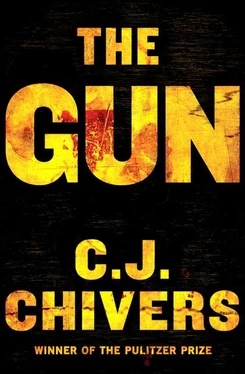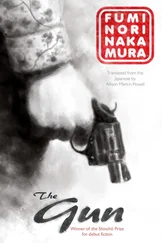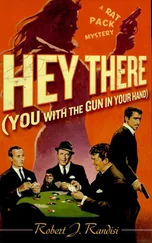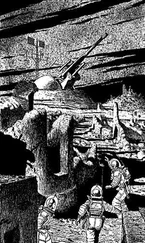Fechter could not raise himself. He had been struck in the pelvis.
The hips, upper thighs, and pelvic girdle are among the worst places for a rifle bullet to smack into a human being. Wounds to these areas are often instantly immobilizing. Load-bearing bones rupture. Victims buckle and collapse. Complicating matters and raising the risk of swift death, large blood vessels follow the contours of bones. If cut, these blood vessels tend to bleed heavily and in ways that can be hard to stop. In the mad race to stop the flow, pressure and tourniquets are hard to apply.
Just a few feet from Kulbeik, at the edge of the communist world, Peter Fechter could not stand, much less scale a vertical concrete wall. Unarmed, eighteen years old, and at the mercy of two governments whose boundary he straddled, he slumped to his side, his blood draining from a wound almost impossible to treat. He was in need of immediate aid. His hasty attempt to escape had come to a full stop. He was not inches from freedom. He was a spectacle, watched by residents and officials from both sides, a helpless young man, minutes from death.
He shouted for aid. Surely he was not a threat, or capable of escape. Weapons were no longer required. But the wall was new, and the procedures for this kind of moment uncertain. From their posts on the east and from the west alike, the guards watched, joined by a growing crowd. No one dared to step into the strip and help. Fechter was thrown a bandage from the Western side. His wound was too severe, and too tricky, for him to hope to treat himself. Fechter bled. After several minutes he passed into unconsciousness, and fell silent. He slumped on his side, in the fetal position, wearing a dark sport coat. Later, the East German border guards, helmets on, their assault rifles slung across their dark coats, ventured to the wall and picked up Fechter and carried him away. An East German doctor soon pronounced him dead.
No one outside his own circle had heard of Peter Fechter before. He verged on anonymity in life. His death was of the most public sort, and East Germany was unapologetic about how in his ending he realized instant and gruesome fame. Karl-Edvard von Schnitzler, the caustic East German television host, swept aside complaints, and defended the guards’ decisions both to shoot and to leave the young man to die. “The life of each of our brave boys in uniform is worth more to us than the life of a law-breaker,” he said. “One should stay away from our border—then you can save the blood, tears, and cries.” The killing of Fechter also fit the use of the assault rifle for which Mikhail Kalashnikov had been rewarded: “reinforcing the power of the state.” Here was the real Kalashnikov, 1962, propaganda peeled away. 10
The Kremlin’s posture toward its satellites and their yearnings for self-determination remained true to this form.
In early 1968, the Soviet Union faced another challenge from its western vassals, this time in the Czechoslovak Socialist Republic, where a reform-minded politician, Alexander Dubček, assumed control of the nation’s Communist Party. Dubček sought change, including loosening restrictions on speech and on the press, liberalizing the economy, and offering citizens more consumer goods. The challenge to Kremlin hegemony was less confrontational than the uprising in Hungary twelve years before. But it was a threat. Its nickname, Prague Spring, suggested it was only a start. By July, with the Kremlin worried that tolerating one upstart might encourage others, the Soviet army was planning exercises—the word used to mask an invasion—on Czech and Slovak soil. 11Soviet divisions struck in August, advancing alongside troops from Bulgaria, Hungary, and Poland. The airport outside Prague was seized, allowing transport planes to offload troops. Resistance was sporadic and mostly light. But more than seventy people were killed, and Moscow had sent a fresh signal to its satellites and to the West: The communists’ hold on power would be preserved by force. When it felt threatened, the Soviet Union and its local partners would move past talk of fraternal relations and partnership and turn its guns on its own, just as they would fire on their unarmed citizens when they tried to flee.
The Eastern bloc had changed from Stalin’s time. The Great Terror had given way to a less bloody form of centralized rule. But there would be no organic evolution from the totalitarian remains of what Lenin and Stalin had built. If the system were to give way, it would have to crack. The political consequences of this posture, and its effects on civil liberties and human rights, were obvious. The security implications were worrisome. One day, when the communist systems came under strain, or when they shattered, their huge storehouses of weapons might slip from state control to markets, where appetites for the arms were growing.
Eastern bloc infantry rifles had come to the Middle East in large numbers in the mid-1950s. The first large shipment to be widely recorded—the Kremlin-negotiated deal via Czechoslovakia to Nasser’s Egypt in 1955—apparently did not involve AK-47s. Czech rifles were shipped. But not long after these transfers, Soviet AK-47s began to flow to the Egyptian army, as did M1943 ammunition and the technology to produce both the weapons and the cartridges. By the late 1950s, American technical intelligence officials were secretly testing Egyptian-manufactured 7.62x39-millimeter cartridges—a sign that a Middle Eastern version of the ammunition was already in significant circulation. 12By the early 1960s, Egyptian soldiers were carrying an Egyptian-made AK-47 knock-off—the Misr, the first of many Kalashnikovs to be cloned in the Middle East. Soon the Kremlin’s engagement with Egypt, Syria, Algeria, Tunisia, and Libya resulted in their militaries’ adopting the Kalashnikov line. The timing was portentous. Unlike many military items the Soviet Union provided its customers in the region, small arms could be easily transferred to third parties, who could easily master their use. And the rush of Soviet infantry weapons into the region aligned with the rise of Palestinian nationalist groups, many of which engaged in campaigns of terrorism against Israel and its citizens.
Middle Eastern terrorism had been nurtured with state sponsorship. Soon after Israel declared independence in May 1948, Egypt’s King Farouk I had organized unconventional fighters against the Jewish state. The fighters called themselves fedayeen, guerrillas prepared to sacrifice their lives. From bases in Jordan, Lebanon, and elsewhere, and with backing from Egypt’s intelligence service, the Mukhabarat, they conducted attacks against Israelis in the early 1950s. After Farouk was deposed in 1952, in part because of Egypt’s military failures, the Egyptians lent the fedayeen more support. Unconventional war and sabotage proliferated as other Middle Eastern governments and the Palestinian diaspora followed the Egyptian example. Unable to defeat Israel by conventional means, they maintained pressure in other lethal ways, while seeking a measure of deniability.
In the evolution of war, processes that develop in parallel—political, technological, or tactical—can suddenly cross, and at these points of intersection wars change. In the crucible of the Middle East in the 1960s, this was the case. The Palestinian groups that chose militancy soon procured the newly available rifles that the Eastern bloc had shipped to its Middle Eastern clients. The AK-47 and the AKM became standard arms for unconventional war. They were studied in militant training camps and carried on guerrilla and terrorist missions that entered the groups’ tactical routine. Assault rifles, those lightweight instruments for concentrating firepower, multiplied the menace of individual insurgents and terrorists, elevating the danger they posed and the ambitions they voiced. The weapons’ utility was not lost on the groups’ leaders. Khalil al-Wazir, a commander who eventually led Fatah’s armed war under the nom de guerre of Abu Jihad, embraced the AK-47 as a vehicle to victory. “The Kalashnikov is our only language until we free all of Palestine,” he said. 13From the fedayeen camps in the Middle East, the weapon, and the mentality for turning its barrel toward civilians, spread outward. Eventually a flight from Libya in 1972 carried six of the rifles to Munich.
Читать дальше











